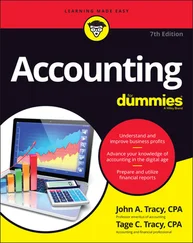5 Part Three USING FINANCIAL STATEMENTS 16 FOOTNOTES AND MANAGEMENT DISCUSSIONS Financial Report Content in Addition to Financial Statements Financial Statements—Brief Review Why Footnotes? Two Types of Footnotes Management Discretion in Writing Footnotes Analysis Issues 17 FINANCIAL STATEMENT RATIOS AND ANALYSIS Financial Reporting Ground Rules Financial Statement Preliminaries Benchmark Financial Ratios Two Cash Flow Ratios to Chew On Final Comments 18 FINANCIAL ENGINEERING What Financial Engineering Is Not What Financial Engineering Is 19 CPAs AND FINANCIAL REPORTS Certified Public Accountant (CPA) From Preparation to Audit of Financial Reports by CPAs Why Audits? Do Auditors Discover Financial Reporting Fraud? 20 BASIC QUESTIONS, BASIC ANSWERS When You Buy Stock Does the Company Get Your Money? Are Financial Reports Reliable? Are Some Financial Statements Misleading and Fraudulent? Should You Take the Time to Compute Financial Statement Ratios? Why Read Financial Statements, Then, If You Won’t Find Information That Has Been Overlooked by Others? The Financial Statements and Footnotes of Large Public Companies Would Take Several Hours to Read Carefully: What’s the Alternative? Is There a Basic Test to Gauge a Company’s Financial Performance? Do Financial Statements Report the Truth, the Whole Truth, and Nothing but the Truth? Does Its Financial Report Explain the Basic Profit-Making Strategy or Profit Model of a Business? Does the Market Price of a Public Company’s Stock Shares Depend Directly and Only on the Information Reported in Its Financial Statements? Does the Balance Sheet of a Private Business Tell the Market Value of the Business? Do Books on Investing and Personal Finance Refer to Financial Statements? A Very Short Summary ABOUT THE AUTHORS INDEX END USER LICENSE AGREEMENT
1 Chapter 1 Exhibit 1.1 Summary of Cash Flows During Year
2 Chapter 2 Exhibit 2.1 Income Statement for Year Exhibit 2.2 Year-End Balance Sheets Exhibit 2.3 Single-Step Income Statement
3 Chapter 3 Exhibit 3.1 Statement of Cash Flows for Year Exhibit 3.2 Revenue and Expenses: Cash Flows Versus Accrual Amounts
4 Chapter 4Exhibit 4.1 Connecting Annual Income Statement with Year-End Balance SheetExhibit 4.2 Connecting Balance Sheet Changes with Statement of Cash Flows
5 Chapter 5Exhibit 5.1 Sales Revenue and Accounts Receivable
6 Chapter 6Exhibit 6.1 Cost of Goods Sold Expense and Inventory
7 Chapter 7Exhibit 7.1 Inventory and Accounts Payable
8 Chapter 8Exhibit 8.1 Selling, General, and Administrative Expenses and Accounts Payable
9 Chapter 9Exhibit 9.1 Selling, General, and Administrative Expenses and Prepaid Expenses
10 Chapter 10Exhibit 10.1 Property, Plant, and Equipment, Depreciation Expense, and Accumulated Depreciation
11 Chapter 11Exhibit 11.1 Accruing Unpaid Expenses
12 Chapter 12Exhibit 12.1 Income Tax Expense and Income Tax Payable
13 Chapter 13Exhibit 13.1 Net Income and Retained Earnings; Earnings per Share (EPS)
14 Chapter 14Exhibit 14.1 Cash Flow from Operating (Profit-Making) ActivitiesExhibit 14.2 Direct Method Format for Reporting Cash Flow from Operating Activities in the Statement of Cash Flows
15 Chapter 15Exhibit 15.1 Cash Flows from Investing and Financing Activities
16 Chapter 17Exhibit 17.1 External Financial Statements of Business (Without Footnotes)
1 Cover
2 Table of Contents
3 Preface
1 ii
2 iv
3 ix
4 x
5 1
6 3
7 4
8 5
9 6
10 7
11 8
12 9
13 11
14 12
15 13
16 14
17 15
18 16
19 17
20 18
21 19
22 20
23 21
24 22
25 23
26 24
27 25
28 26
29 27
30 28
31 29
32 30
33 31
34 32
35 33
36 34
37 35
38 37
39 38
40 39
41 40
42 41
43 42
44 43
45 44
46 45
47 46
48 47
49 48
50 49
51 50
52 51
53 52
54 53
55 55
56 56
57 57
58 58
59 59
60 60
61 61
62 62
63 63
64 64
65 65
66 66
67 67
68 68
69 69
70 70
71 71
72 72
73 73
74 74
75 75
76 76
77 77
78 78
79 79
80 80
81 81
82 82
83 83
84 84
85 85
86 86
87 87
88 89
89 90
90 91
91 92
92 93
93 94
94 95
95 97
96 98
97 99
98 100
99 101
100 102
101 103
102 104
103 105
104 106
105 107
106 108
107 109
108 110
109 111
110 112
111 113
112 115
113 117
114 118
115 119
116 120
117 121
118 122
119 123
120 124
121 125
122 126
123 127
124 129
125 130
126 131
127 132
128 133
129 134
130 135
131 136
132 137
133 138
134 139
135 140
136 141
137 142
138 143
139 144
140 145
141 147
142 149
143 150
144 151
145 152
146 153
147 154
148 155
149 156
150 157
151 158
152 159
153 160
154 161
155 162
156 163
157 164
158 165
159 166
160 167
161 168
162 169
163 170
164 171
165 172
166 173
167 174
168 175
169 176
170 177
171 178
172 179
173 180
174 181
175 182
176 183
177 184
178 185
179 186
180 187
181 188
PREFACE TO THE NINTH EDITION
This book has stood the test of time and reminds all of us that fortifying your understanding of financial reports and statements has been, is, and will always be essential evergreen knowledge. After 40 years in print, spanning nine editions, it has survived countless economic and financial challenges—and is still going strong. My son Tage joined me as coauthor in the previous edition, and I willingly share credit with him for the book’s continued success.
This edition catches up with major changes in financial reporting since the eighth edition was released in 2013. It also expands our discussion on how financial results are communicated. At the same time, however, the architecture of the book remains unchanged. The framework of the book has proved very successful for 40 years so I’d be a fool to mess with this winning formula. (My mother did not raise a fool.)
Cash flows are underscored throughout the book and remain a central focus of the current edition. In business, everything starts and ends with cash flow, which is a concept we never stray too far from.
As with all previous editions, our book explains the connectivity of the different pieces of information reported in financial statements. In reading financial statements you need to know how the different elements are connected. You cannot grab one piece of information in one place and ignore its other dimensions and contexts. Financial statements are, essentially, spreadsheets, although they do not demonstrate what’s connected to what.
We have prepared all the exhibits in the book as Excel worksheets. To request a copy of the workbook file of all the exhibits, please feel free to contact one of us via email (me at tracyj@colorado.edu or Tage at tagetracy@cox.net).
In summary, I express my sincere thanks to all of you who have sent compliments about our book. The royalties from sales of the book are nice, but the messages from readers form the real icing on the cake.
Читать дальше












